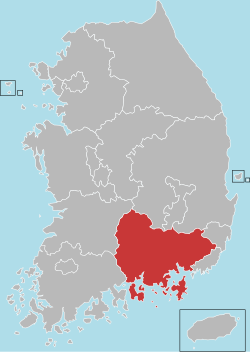EPIK, GEPIK, SMOE, GOE: These are the most common programs you can apply for to get a public school job in Korea. What’s the difference? So which one should you apply for ?
EPIK: Education Program in Korea
EPIK is a program sponsored by the Korean government to place native English speakers into their public schools. If you apply to EPIK, you can list your preference where you want to go. Keep in mind, just because you want to go there, doesn’t mean you’ll be placed there. Because EPIK covers all of South Korea, you may be placed in GOE or SMOE areas.
SMOE: Seoul Metropolitan Office of Education

Seoul image from: Wikipedia
For those who can’t risk living and working outside the big city, SMOE might be your best option. SMOE places native English teachers only in districts around Seoul. However, this does not include Gangnam. Sorry, no high-life for you. Since many candidates prefer Seoul, it is a highly competitive market.
GEPIK: Gyeonggi Education Program in Korea

Gyeonggi-do image from: Wikipedia
Gyeonggi-do is the suburbs of Seoul. It is a little more difficult to get a job in Gyeonggi-do since they prefer to have teachers who already have teaching experience in Korea. The locations from Seoul can be as far as a 1-2 hour commute.
GOE: Gyeongsangnam Office of Education
I have worked for GOE for over a year, so I have a lot more experience and information on this area. Because of that, I’m a little biased. I think Gyeongsangnam-do is a great place to work and live. It’s a nice balance between experiencing modern-Korean city life and traditional life.

Gyeongsangnam-do image from: Wikipedia
Gyeongsangnam-do is a southern province in Korea. It includes cities such as Changwon and Jinju and islands Geoje and Namhae. When you apply with GOE, you have a better idea where you are going to be placed than if you were to apply with EPIK. Openings are also available year-round so you don’t have to wait for spring or fall to get placed.
Weather
Because it is in the southern part of Korea, the weather is warmer in the summer and has very little snow in the winter. When I say “very little snow,” I mean zero accumulation. My students freaked out when they saw the first snowfall last year. I had to squint my eyes to see the tiny flakes glimmer in the sunlight before they melted away. The winter is bitter cold; with wind that cuts through your clothes. I’ve never felt the need to wear leggings under my pants until I moved to Korea. And when I say “warmer,” I mean get ready to sweat your (proverbial) balls off. The humidity is no joke. I rarely stepped out during the summer at the risk of instantly turning into a pool of sweat the moment I did.
Location
I think what deters a lot of people from applying for GOE is the fear of getting placed in a rural location. There’s nothing wrong with being a city mouse, but the “country” life isn’t so bad, either. Gyeongsangnam-do may not have everything a large metropolitan city has, but it’s not the deep-woods, either. My city, Miryang, is kinda the sweet spot of Gyeongsangnam-do, if I do say so myself. It’s close to three major cities (Busan, Daegu, and Changwon), has the KTX train, and has a small town feel with a decent sized downtown. Keep in mind that I’m a small town girl, but even so, I think there is plenty of things to keep busy in this area.
Schools
When you apply to GOE, it is almost certain that you will have more than one school. This is a good thing and a bad thing. It’s bad because there is a possibility that you will have to make entirely different lessons for each school and/or you may even have to work with a range of grade levels. It’s good because you get to add on 100,000 won a month to your paycheck. Couple that with the likely addition of 100,000 won for working in a rural location and BAM! you’re 2,400,000 won richer than the chump that took the city job. On top of the pay upgrade, I find the rural students to be more polite and the class sizes to be smaller. It’s so much fun to teach at my rural school that I sometimes wish I taught at all rural schools.
Support
Miryang has a fantastic Education Office. The MOE puts on a yearly cultural field trip for the Guest English Teachers (GET) in Miryang. They take us to another city in the Gyeongsangna-do province for two days and one night… during the weekday. ARE YOU HEARING THIS? I’m getting paid to travel, eat, and sleep in Korea. Last year, we went to some tourist sights, ate at a traditional restaurant, made pottery, stayed at a nice hotel; all 100% paid for by MOE. MOE has also been super supportive and helpful when we have questions that can’t be answered by our co-teachers.
Moving beyond the city education office, the GOE is rather supportive as well. Back when I first started, I didn’t feel like I had much connection with GOE. Now, there is a new coordinator who genuinely seems to want to help the GETs. He has set up a website (www.dowajo.org) to help GETs transition into Korean life and arranges some mildly entertaining/helpful workshops. He tries very hard to get the feedback of current GETs in order to improve the experience for the newbies.












